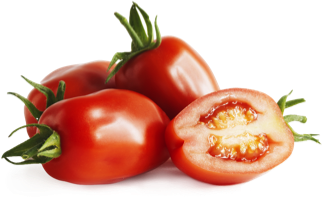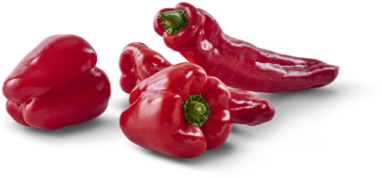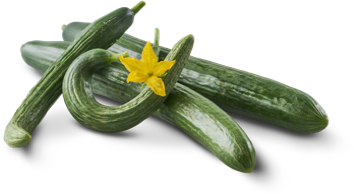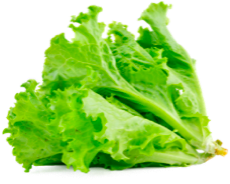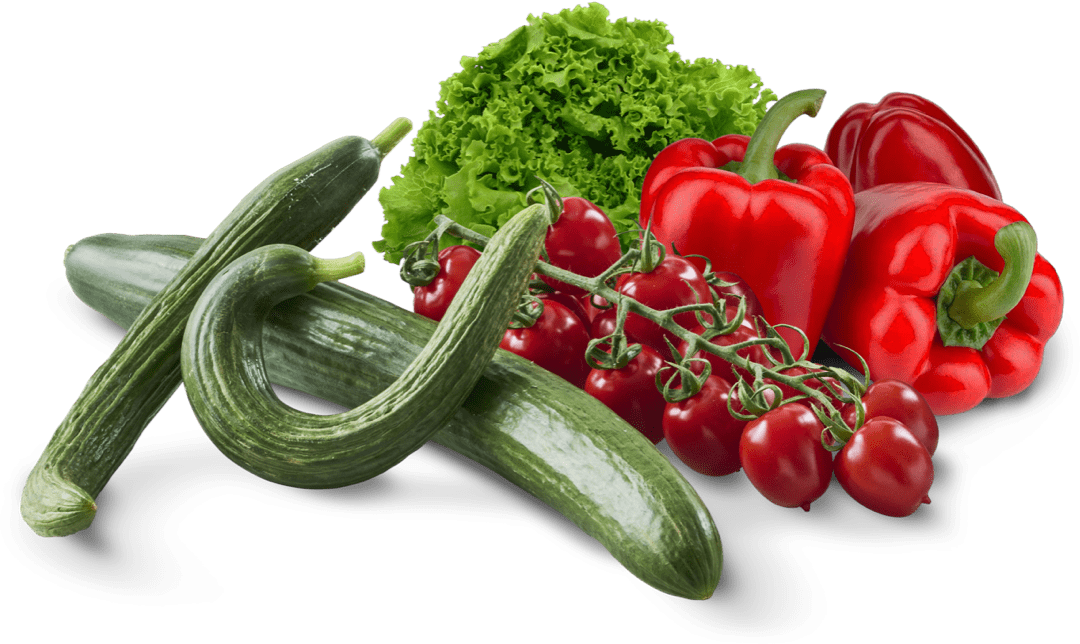
Sun-ripened and hand-picked
We grow Denmark’s most pampered tomatoes, cucumbers and peppers. They are hand-picked and allowed to ripen fully on the plants, as this brings out the best flavour. Quality, taste and caring for the environment and surroundings are the most important things to us – and we are always looking for new varieties.
Tomatoes and umami
Tomatoes are one of the fruits – or vegetables in colloquial speech – with the greatest variety of flavours, and there are approx. 15,000 different tomato varieties worldwide, each with their own characteristics. The flavour of a tomato is primarily determined by two factors: What aromas are released and the ratio of sweetness to acidity.
Tomatoes are considered the best plant-based source of umami, and the riper they are, the more umami they contain. All of our tomatoes are rich in umami taste, as they are picked late and thus have a naturally high content of the amino acid glutamate.
Danish tomatoes are in season from April to November, but our cultivation methods mean that we can grow them all year round.
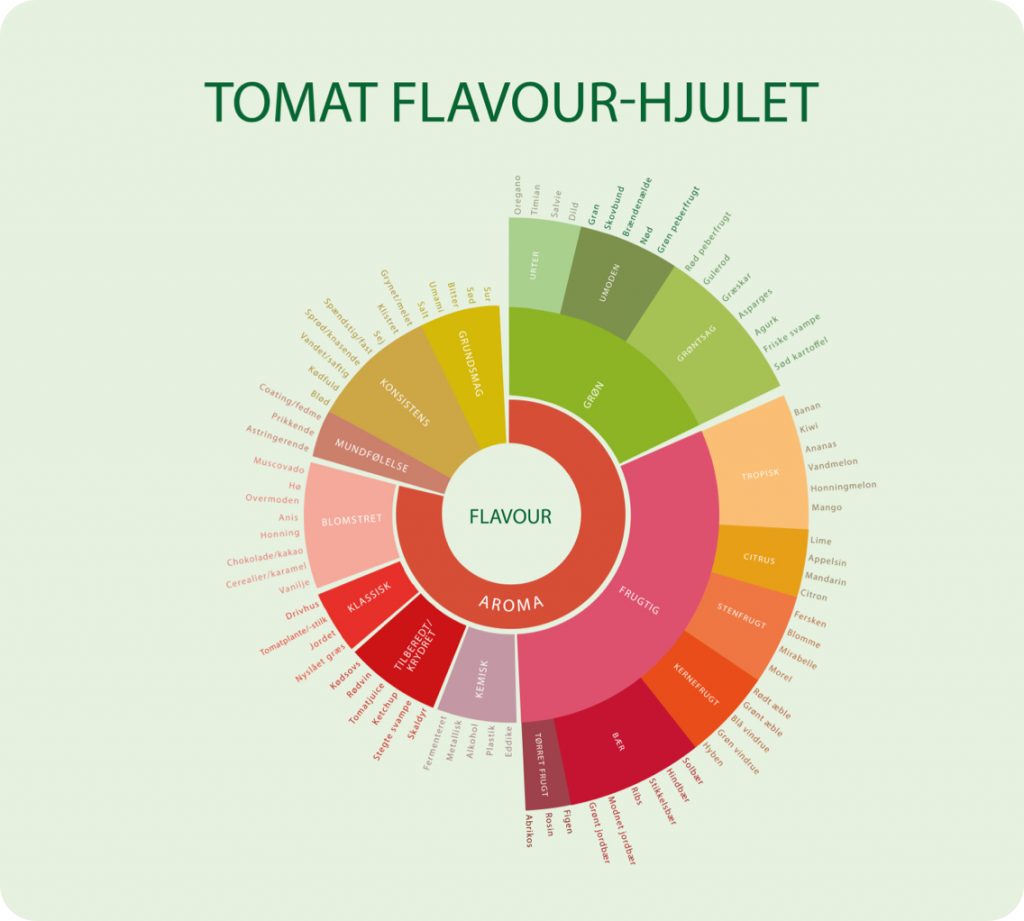
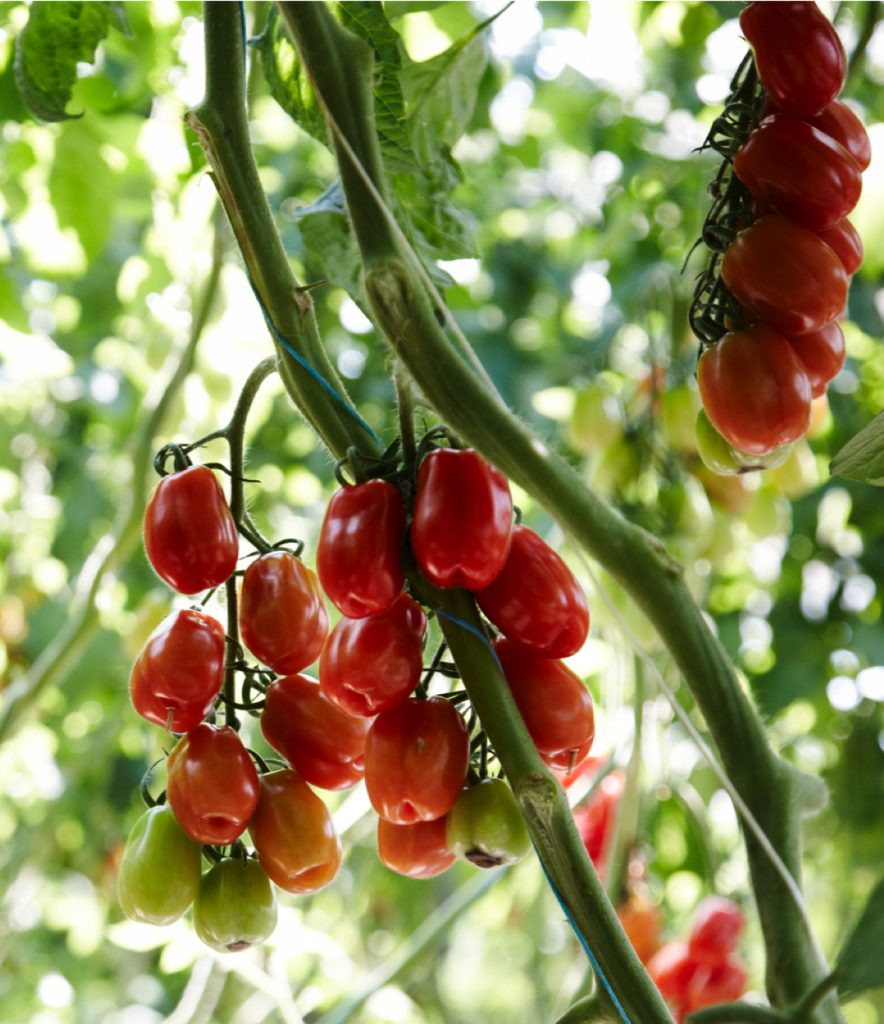
Red health bombs
Tomatoes are a healthy and lean food with only approx. 100 kJ of energy per 100 g. They are also full of C and K vitamins, and when you eat tomatoes, you get E and A vitamins, fibres and potassium.
Lycopen
The substance lycopene gives tomatoes their red colour. Lycopene is an antioxidant that has many good health properties. In particular, it is believed that lycopene can help reduce the risk of developing a number of chronic diseases and reduce cancer mortality.
Tomatoes have a very high content of lycopene. They contain more lycopene per gram than any other fruit or vegetable, and the lycopene does not disappear when heated, so the more tomatoes you use and the more the tomatoes are concentrated (e.g. when made into a sauce), the more lycopene the dish contains.
The journey of the tomato from Peru to Europe
The tomato originally came from Peru but, over time, became more widespread in Central America, where it was grown as a regular crop. In the 16th century, it was introduced to Europe by the Spanish. The tomato is a member of the nightshade family, just like the potato, and it was believed for many years that both potatoes and tomatoes were poisonous. It was not until the 18th century that the tomato made its way into kitchens around the world. Today, they are among the most cultivated vegetables in the world.

Tomato tips and FAQ
How to store your tomatoes
Never put tomatoes in the fridge! An important prerequisite for ensuring that Danish tomatoes maintain their rich taste is to ensure they are not cooled down. Allowing the tomatoes to cool down will stop the natural ripening process, which helps give them their flavour and aroma. So store the tomatoes in a bowl at room temperature – this way, they can decorate the table, and their shelf life will not be impaired in the slightest!
How to peel your tomatoes
Pour boiling water over the tomatoes and leave them for a few minutes. Drain the water and rub off the peel.
Avoid food waste
Maybe you are one of those people who throw out your tomatoes when they start to look a little wrinkly? You mustn’t! This is when the tomatoes are packed with the most flavour. Maybe they don’t look pretty in a salad or are crunchy to bite into, but throw them in a pan or in the oven with some quality olive oil, a little salt and pepper, maybe some garlic, and roast or bake them until they’re completely tender. Serve them as a side dish with grilled fish, or stir them in with some good pasta and plenty of fresh basil.
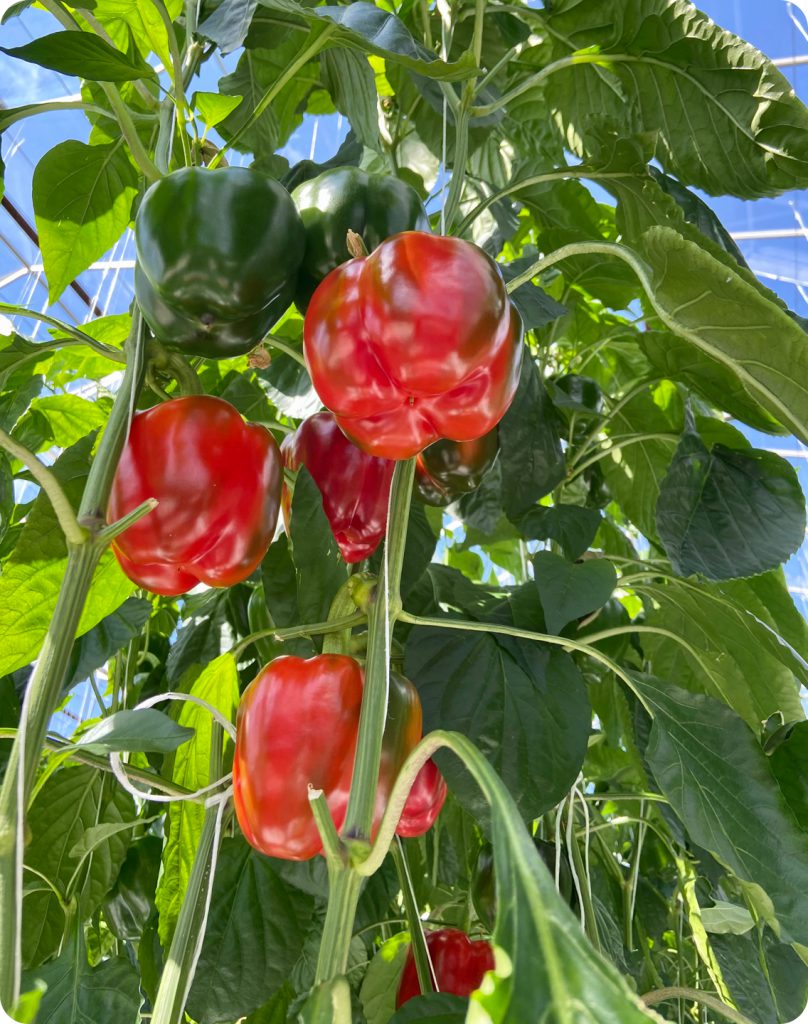
Peppers
Peppers are a good source of vitamins A, E, C, B6 and folate, which support your eyes, immune system, red blood cells, skin and DNA and help your body to convert food into energy. Peppers are low in calories but high in the mineral potassium, which helps regulate blood circulation and can lower your blood pressure.
Peppers have a beautiful shape and are available in all the colours of a traffic light, depending the degree of ripeness. They are part of the nightshade family, just like the potato and the tomato. Peppers originally came from South and Central America and arrived in Europe in the 18th century. They became widespread in Denmark from the 1960s.
Remember to store peppers in a bag in the fridge. This keeps the peppers crunchy, crisp and fresh.
Cucumbers
The cucumber originally came from India, where it has been cultivated for over 3,000 years. In Denmark, we have been familiar with cucumbers since the 18th century, when they came here from Southern Europe. In the 1900s, when cultivation in greenhouses became more widespread, we started growing our own cucumbers at home.
The cucumber is made up of 95% water, but despite this, it is full of healthy and important vitamins and minerals. It contains magnesium, which helps to calm the nervous system, and it can also lower blood pressure. It also contains vitamin K, which among other things helps the body to absorb calcium from the diet. Cucumbers contain only 15 calories per 100 grams, so you can eat freely with a clear conscience.
Cucumbers are often referred to as a vegetable, but botanically the cucumber is actually a berry with many seeds, and is closely related to courgettes, pumpkins and melons.
Store cucumbers in a bag in the fridge. This will keep them crisp and fresh and extend
their shelf life.
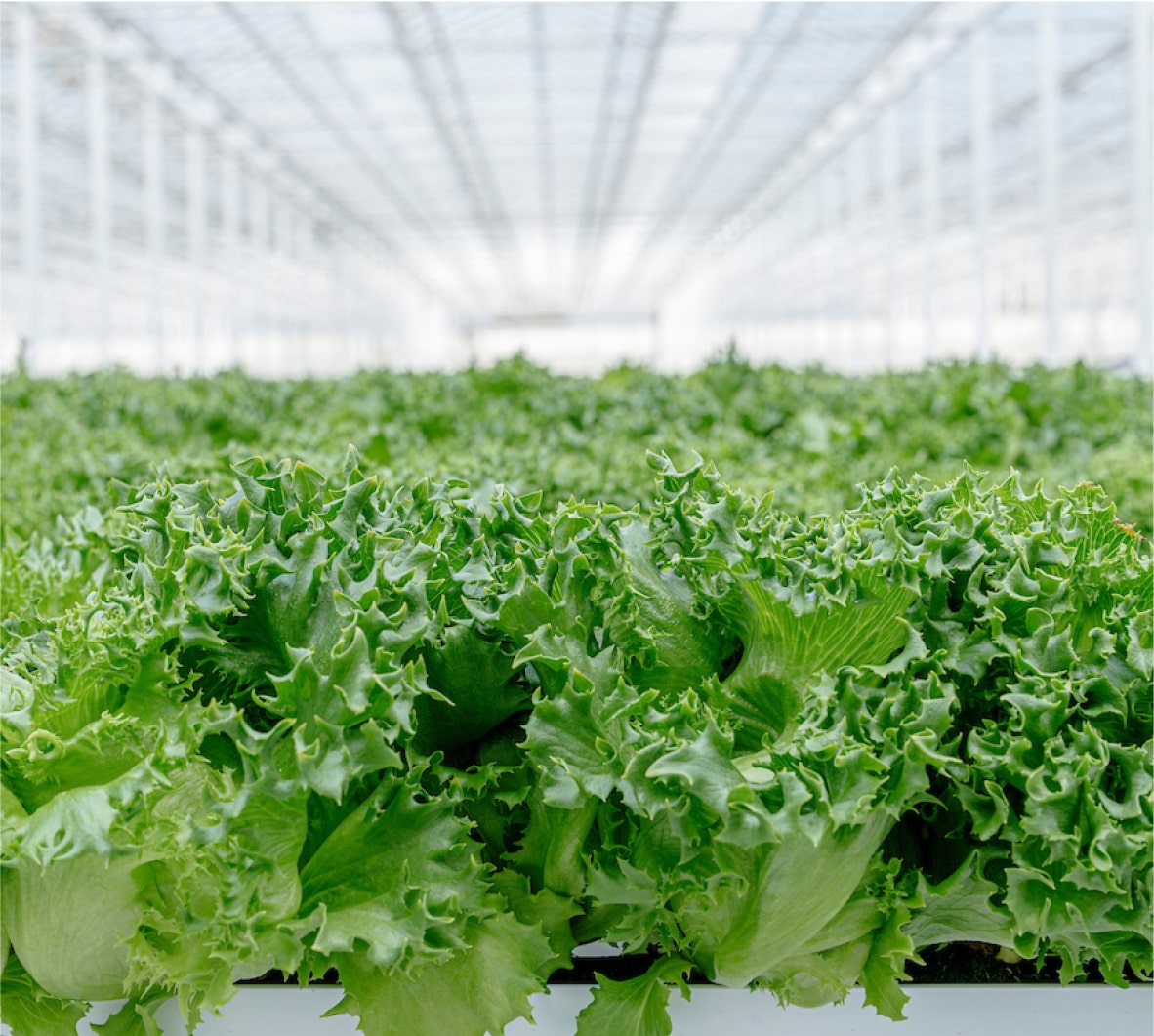
Danish lettuce at its finest
Our new Danish lettuce project is going ahead at full steam as we work passionately to develop flavourful salads of the highest quality and with extra crispness. These are ready-to-eat products with a longer shelf life than what you know from the supermarkets today – it’s simply Danish lettuce at its best.
Production is located in our new, climate-controlled greenhouse in Bellinge on Funen, where green transition, recirculation and nature’s own processes are in focus. Lettuce production is 100 % automated from the moment the seed is sown until the lettuce is in the box.
We grow the following varieties: Nordic Crisp, Nordic Crisp Mix, Lollo Bionda and Mini Romaine.
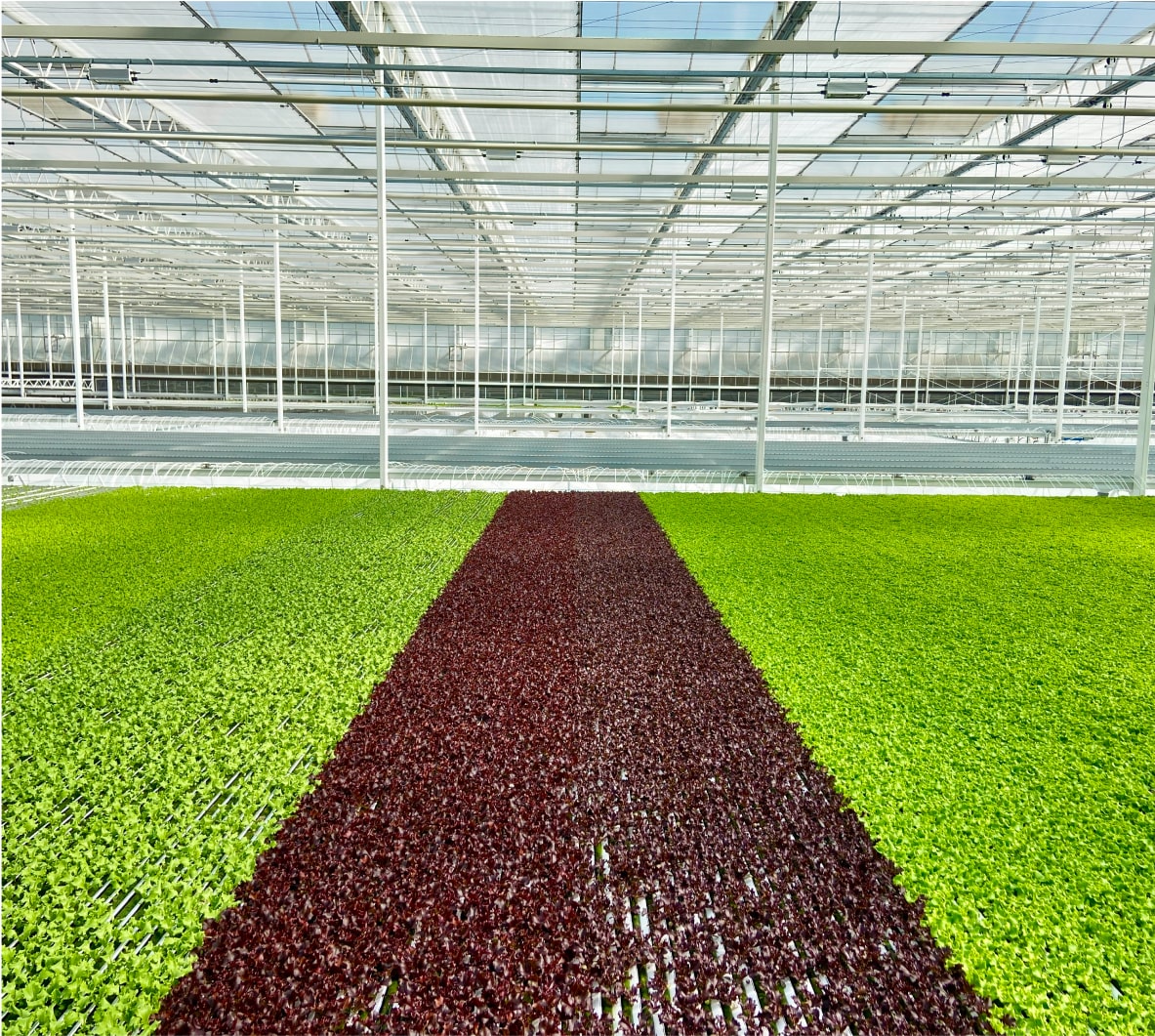
High-tech production
The greenhouse is controlled by operators via software programs, and thanks to cameras connected to artificial intelligence, the plants are constantly monitored for diseases, fungal and pest infestations, ensuring that we can intervene in time.
For the past 5 years, we have been working with engineers from the US and Canada who are among the best in horticulture and agriculture, and all machines in the Nordic Greens Salat facility are custom designs, resulting in an unprecedented approach to growing lettuce.
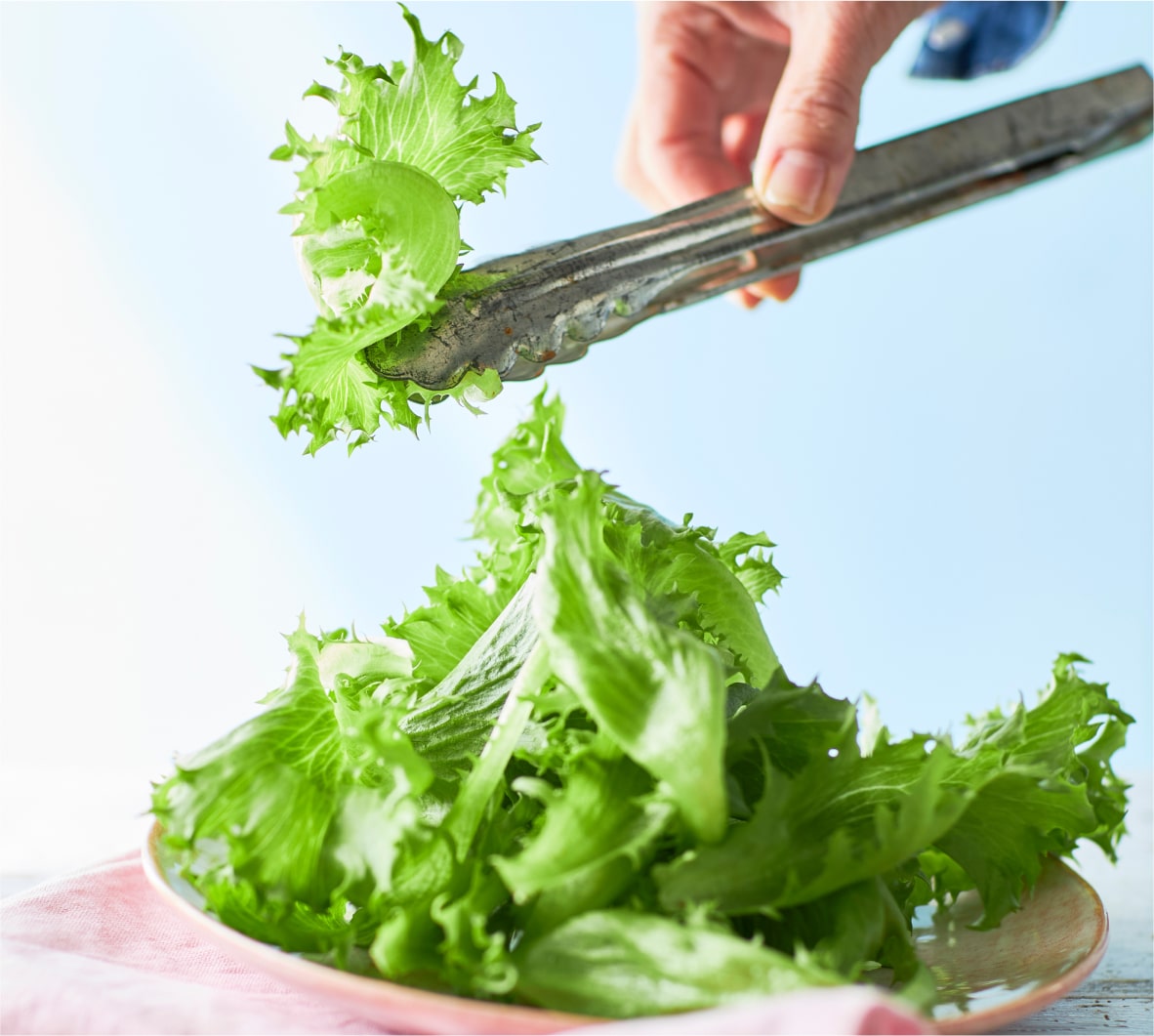
Nordic Crisp
The greenhouse is controlled by operators via software programs, and thanks to cameras connected to artificial intelligence, the plants are constantly monitored for diseases, fungal and pest infestations, ensuring that we can intervene in time.
For the past 5 years, we have been working with engineers from the US and Canada who are among the best in horticulture and agriculture, and all machines in the Nordic Greens Salat facility are custom designs, resulting in an unprecedented approach to growing lettuce.
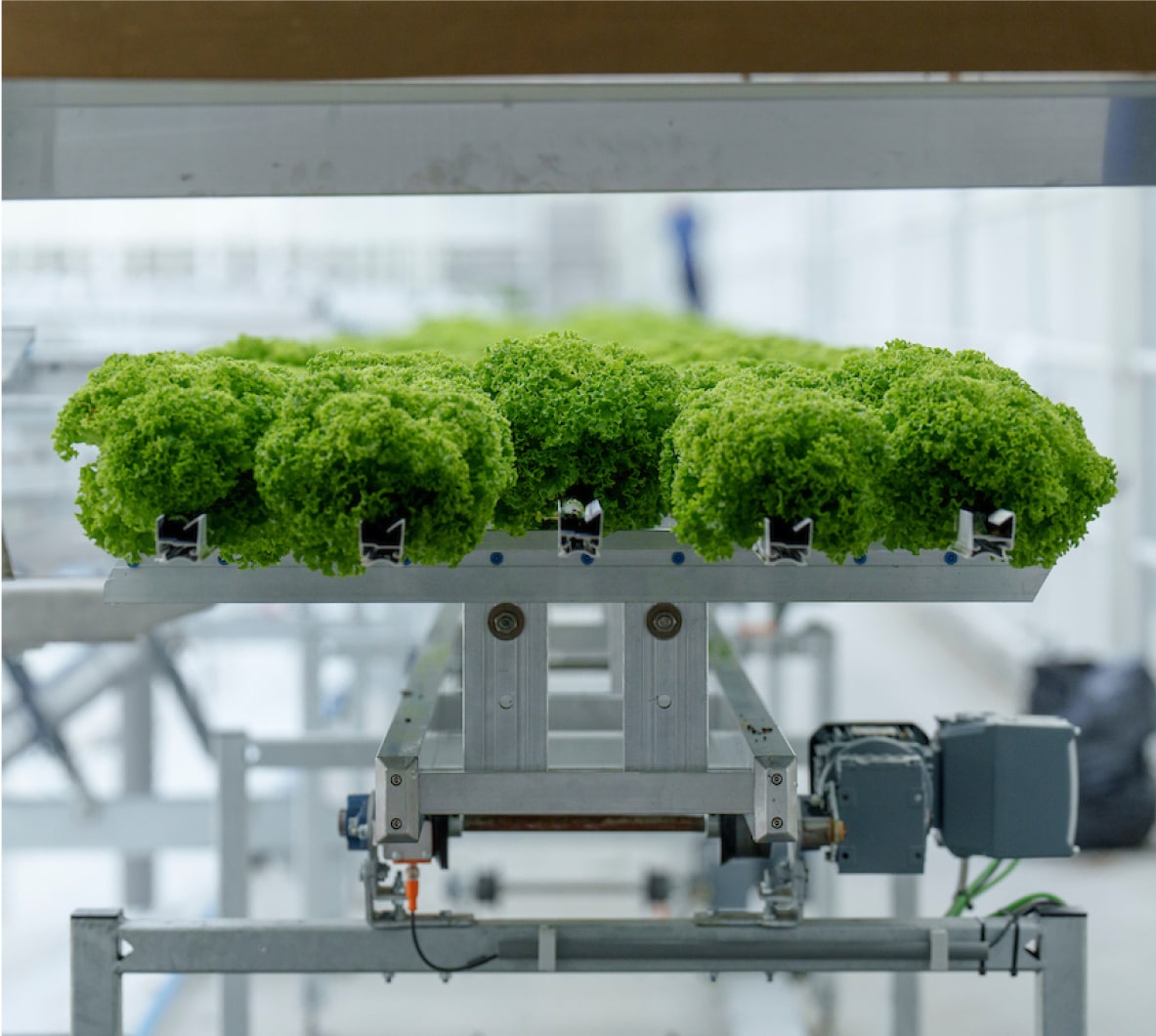
Environmental considerations and benefits:
- Ready to use – no need to rinse
- Extra crispness
- Salad without pesticides
- Approx. 90% less water consumption than field-grown lettuce
- Solar energy from own solar farm
- From our greenhouse on Funen – all year round
- Irrigation with purified rainwater
The lettuce varieties are available under the Katrine & Alfreds brand in SuperBrugsen, Kvickly and 365, or under the Green Love brand in REMA 1000, SPAR, Min Købmand, MENY, ABC, Nemlig.com og Løvbjerg stores nationwide while stocks last.


